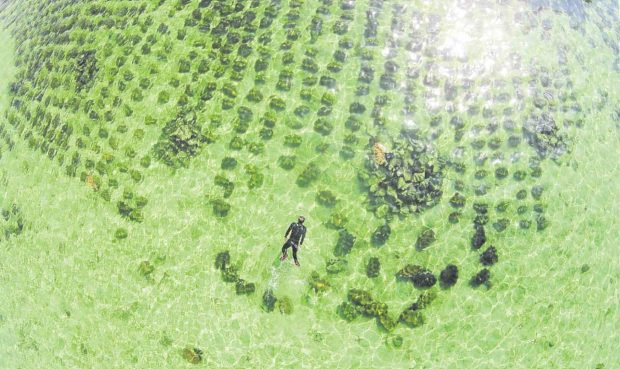
PUERTO PRINCESA CITY, Palawan, Philippines — The future is bright for the conservation of giant clams (Tridacna gigas) after a private foundation has successfully fertilized 9.5 million eggs of this marine species that poachers seek in Philippine waters.
The Malampaya Foundation Inc. (MFI) on Monday said it had embarked on an ambitious project to propagate in large numbers the endangered giant clams, starting in the hatchery of Western Philippines University (WPU) in Barangay Binduyan here.
Hard to propagate
The spawning was supervised by scientists from the University of the Philippines Marine Science Institute (UPMSI), using methods it has developed in its decades of research on the clam species.
“Tridacna gigas are hard to propagate because the population is few. We need to really go to the brood stock [source] to collect eggs and sperms. [The situation is different] compared to other species of clams [because with their huge population, we] can still afford to [bring them to] laboratories,” Dr. Lota Creencia of WPU College of Fisheries and Aquatic Sciences said in a statement.
The native giant clams, upon maturity, will be sent to MFI’s marine protected areas in northern Palawan.
“Giant clams are important because they have a lot of ecological significance, habitat and food for some of the marine animals. It also benefits people because it helps increase fish density,” said Sherry Lyn Sayco, UPMSI researcher.
(This was originally posted at Inquirer.net on June 11, 2019.)
